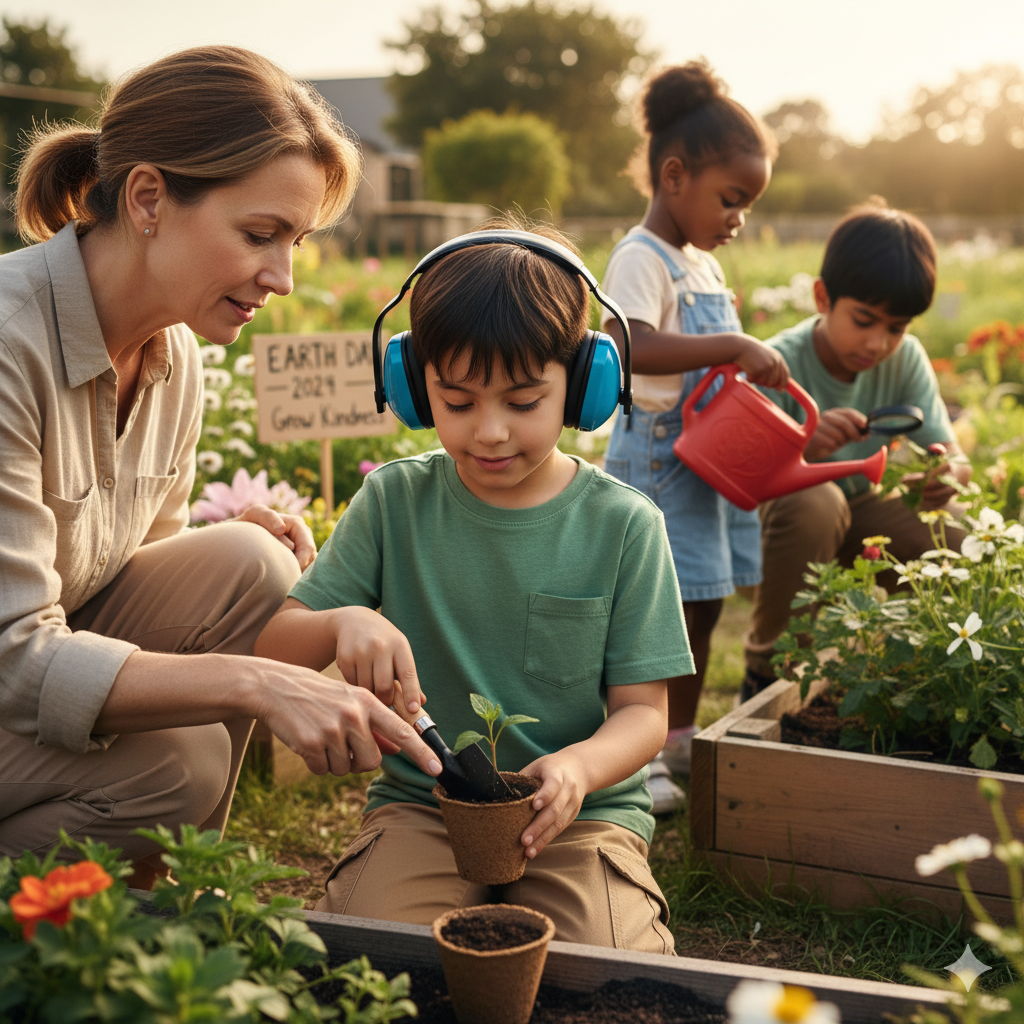Autism and Earth Day: Teaching Environmental Awareness to Autistic Children
If your child has ever spent hours watching ants work or carefully arranging pebbles by size and color, you already know: autistic children often form deep, focused connections with the natural world. Earth Day (April 22) is the perfect opportunity to nurture that connection—and help them grow their awareness of how to care for our planet in ways that feel accessible and empowering.
The best part? Teaching environmental awareness to autistic children doesn’t have to be overwhelming. It’s the everyday choices—recycling, reusing, reducing—that add up over time. With the right support, Earth Day can be a beautiful blend of routine, curiosity, and hands-on learning.’’
Here are four practical ways to explore Earth Day with your school-age child:
1. Use Visual Supports to Break Down Big Ideas
Concepts like “climate change” or “pollution” can feel abstract. Breaking them down into visual steps helps make them more concrete and approachable.
Create a visual chart showing steps for recycling, or use a simple social story to explain how trash affects the ocean and animals. Autism Speaks offers helpful templates for visual schedules and supports you can adapt.
🖼️ Visuals support comprehension and build long-term memory, especially for kids who thrive on structure.
2. Choose Sensory-Friendly, Hands-On Earth Day Activities
Sensory-friendly experiences can turn abstract environmental lessons into real, joyful moments. Let your child plant a small flower or herb garden, sort recyclables, or take a quiet walk to observe animals and plants.
Not every child likes dirt—so consider alternatives like water-based planting (hydroponics), container gardens, or even watching time-lapse videos of seeds growing. National Geographic Kids has excellent Earth-themed videos and visuals that are great for kids who learn best through screen-based media.
🌱 The key is following your child’s sensory preferences and letting them engage in a way that feels safe and fun.

3. Start with Their Special Interests
If your child loves marine animals, talk about how plastic in the ocean affects sea turtles. If they’re into vehicles, explore how electric cars are better for the environment.
Tying environmental lessons to special interests creates instant buy-in and supports deeper engagement.
You might say, “You know how you love whales? Recycling helps keep their ocean home clean.”
🐋 It’s about meeting them where they are—and showing how their passions can become a force for good.
4. Build Earth-Friendly Habits into Daily Routines
Autistic children often thrive on routines—and that’s a superpower when it comes to building sustainable habits. Show your child how turning off lights, conserving water, or packing lunches in reusable containers helps protect the planet.
Celebrate their efforts: “Thanks for turning off the faucet while brushing. That saves water and helps the Earth!”
🌎 Consider giving them a “helper” role—like being the recycling leader for the week—to boost ownership and confidence.
Every Small Step Matters
You don’t need a perfect plan to make Earth Day meaningful. Even one sensory-friendly walk, a simple conversation about animals, or sorting the recycling together can plant the seed for lifelong awareness.
And remember—you're doing amazing work by simply showing up and inviting your child to explore the world around them.
💬 How do you celebrate Earth Day with your child? Have you found any eco-friendly routines that really work? Drop your thoughts or ideas in the comments—we’d love to hear from you.

